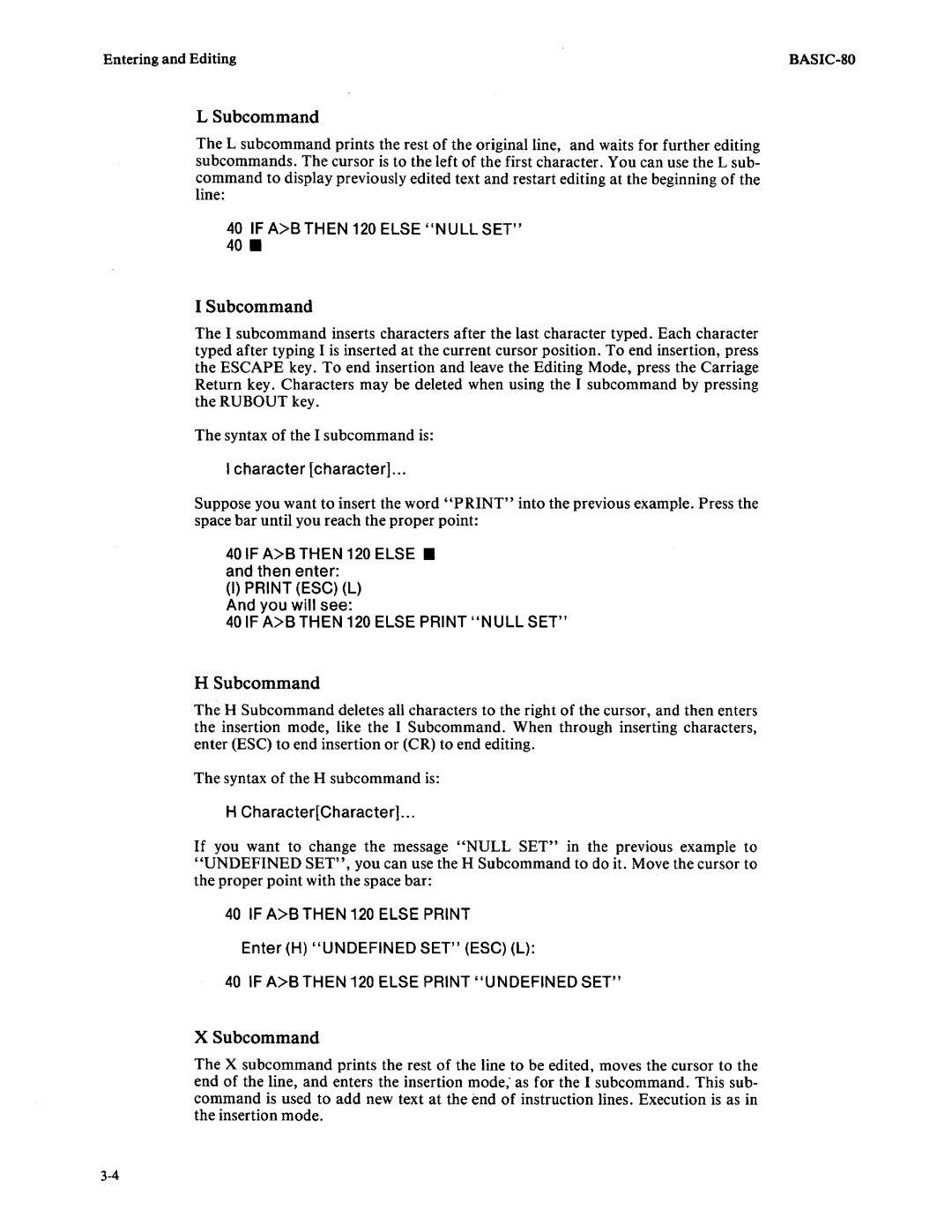
Entering and Editing |
L Subcommand
The L subcommand prints the rest of the original line, and waits for further editing subcommands. The cursor is to the left of the first character. You can use the L sub- command to display previously edited text and restart editing at the beginning of the line:
40IF A>B THEN 120 ELSE "NULL SET"
40.
I Subcommand
The I subcommand inserts characters after the last character typed. Each character typed after typing I is inserted at the current cursor position. To end insertion, press the ESCAPE key. To end insertion and leave the Editing Mode, press the Carriage Return key. Characters may be deleted when using the I subcommand by pressing the RUBOUT key.
The syntax of the I subcommand is:
I character [character] ...
Suppose you want to insert the word "PRINT" into the previous example. Press the space bar until you reach the proper point:
40 IF A>B THEN 120 ELSE. and then enter:
(I)PRINT (ESC) (L) And you will see:
40 IF A>B THEN 120 ELSE PRINT "NULL SET"
H Subcommand
The H Subcommand deletes all characters to the right of the cursor, and then enters the insertion mode, like the I Subcommand. When through inserting characters, enter (ESC) to end insertion or (CR) to end editing.
The syntax of the H subcommand is:
H Character[Character] ...
If you want to change the message "NULL SET" in the previous example to "UNDEFINED SET", you can use the H Subcommand to do it. Move the cursor to the proper point with the space bar:
40 IF A>B THEN 120 ELSE PRINT
Enter (H) "UNDEFINED SET" (ESC) (L):
40 IF A>B THEN 120 ELSE PRINT "UNDEFINED SET"
X Subcommand
The X subcommand prints the rest of the line to be edited, moves the cursor to the end of the line, and enters the insertion mode; as for the I subcommand. This sub- command is used to add new text at the end of instruction lines. Execution is as in the insertion mode.
